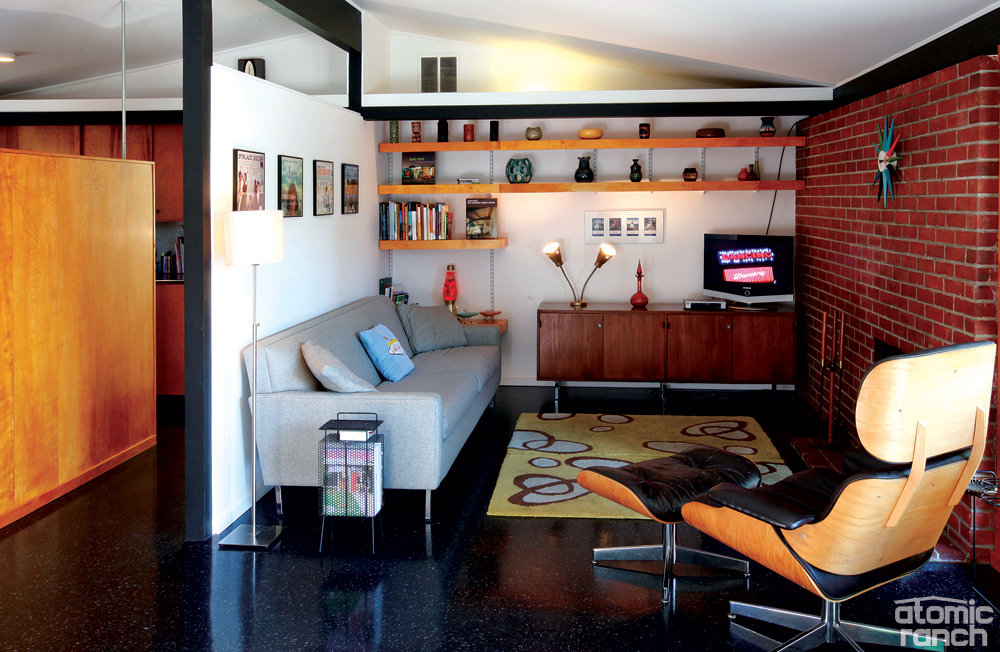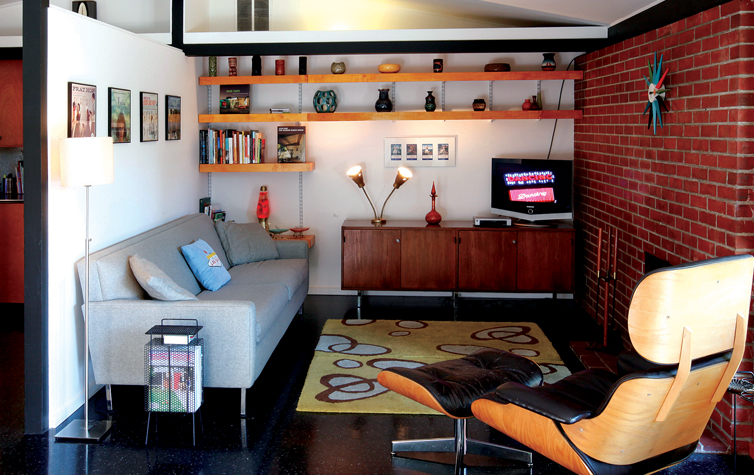
It wasn’t an easy undertaking, but it was worth it. Homeowner Joe Barthlow tells the tale of his Cliff May restoration.
All she could say was “Hmm … hmm.” This was good—it wasn’t a “Yes” but it wasn’t a “No,” either. I still had an opportunity to convince my wife, Tina, that this could be our next home.
We were looking at a house that had sat vacant for a year and a half, the makeshift storage locker in the carport tagged with graffiti and its doors hanging by one hinge. A jail-bar screen door guarded the entry. The worn out roof had a solar water heater at the end of its life, while the landscape consisted of neglected rhododendrons, a dying pear tree and several large holes courtesy of a former owner’s dog. Neighbors had considered tearing the house down and replacing it with a garden. On the positive side was the location in Eugene, Oregon’s, Ferry Street Bridge area, a part of town we normally couldn’t afford. The foreclosed 1955 house was on a good-size lot; other positives included the low-pitched roof, slab radiant heat, exposed ceiling beams, open floor plan, clerestory end gables and walls of glass.
After commuting from Salem to Eugene for eight months, Tina and I decided it was time to move back to our old college town where I worked in a design studio. We had just finished restoring a 1939 Cape Cod and weren’t really looking for another fixer. But after trying to do the cottage bungalow thing, it just wasn’t working for us; our favorite part of our Cape Cod was the remodeled ‘50s basement. My taste was leaning toward something more contemporary, something different, maybe, of all things, a ranch house.
Ah-Ha Moment
What led us to the discovery of this Cliff May home was an epiphany we experienced at the airport 10 years ago. While Tina and I were waiting to catch a flight, I grabbed a shelter magazine for inspiration in our quest for a new home. The magazine featured a Palo Alto house built by some guy named Eichler. It had glass walls, glass end gables, exposed beams, large open rooms and cool furniture found on eBay and at yard sales. The owners seemed like average people like us.
From that point I became obsessed and hit the Web in search of anything Eichler. I discovered the Eichler Network and Lottalivin.com, sites whose members were restoring midcentury modern homes. I also found a book on eBay, Builders’ Homes for Better Living, written by A. Quincy Jones and Frederick Emmons in 1957, that described everything that was wrong about the house we were living in and everything right about the house we now desired. It was a life-changing read for both of us.
“I think I’ve seen houses like those in the South Hills of Eugene,” I told Tina. So, on our first free weekend we made the hour drive to have a look. We found a ’50s post and beam for sale that was small and out of our price range, but we quickly realized this was what we wanted. We also realized most homes in that area were out of reach.
That didn’t stop us from looking. One day our Eugene realtor sent me some listings to scout. A low-slung ranch house with a carport in a desirable neighborhood caught my eye. So did the price.
After our initial visit, I knew I had some objections to overcome and had to show Tina the potential for this dilapidated ranch. Using books and magazines, I illustrated what could be—from landscape design and restoring the window walls to new paint colors. With those images, the location and a price drop from the bank, we were on our way to owning a midcentury home.
More of this Cliff May Restoration
Stay tuned to find out how Joe and Tina restored their Cliff May home in part 2.













